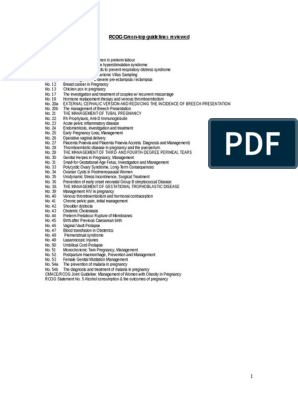0% found this document useful (0 votes)
440 views12 pagesClinical Management for Doctors
This document contains questions and answers related to obstetrics and gynecology from a practice exam. Some key points covered include:
- Diagnosing and managing postpartum hemorrhage.
- Interpreting fetal heart rate patterns on cardiotocography.
- Evaluating and treating lack of cervical dilation in labor.
- Selecting appropriate hormone replacement therapy for menopausal symptoms.
- Diagnosing causes of postmenopausal bleeding.
The document provides explanations for each answer to help assess knowledge in various OB/GYN topics.
Uploaded by
w yCopyright
© © All Rights Reserved
We take content rights seriously. If you suspect this is your content, claim it here.
Available Formats
Download as PDF, TXT or read online on Scribd
0% found this document useful (0 votes)
440 views12 pagesClinical Management for Doctors
This document contains questions and answers related to obstetrics and gynecology from a practice exam. Some key points covered include:
- Diagnosing and managing postpartum hemorrhage.
- Interpreting fetal heart rate patterns on cardiotocography.
- Evaluating and treating lack of cervical dilation in labor.
- Selecting appropriate hormone replacement therapy for menopausal symptoms.
- Diagnosing causes of postmenopausal bleeding.
The document provides explanations for each answer to help assess knowledge in various OB/GYN topics.
Uploaded by
w yCopyright
© © All Rights Reserved
We take content rights seriously. If you suspect this is your content, claim it here.
Available Formats
Download as PDF, TXT or read online on Scribd
/ 12















































































































